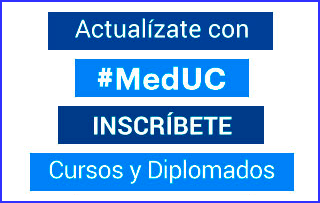Rectorragia en el lactante: diagnóstico diferencial
Palabras clave:
rectorragia, lactante, diagnóstico diferencial.Resumen
Resumen
La rectorragia en el lactante es un síntoma que genera gran alarma y ansiedad en los padres y representa un desafío diagnóstico para el equipo médico, Hemos visto con preocupación que durante los últimos años se ha tendido a considerar la rectorragia del lactante casi un sinónimo de alergia a la proteína de la leche de vaca, muchas veces con una historia clínica escueta, un examen físico incompleto y ninguna prueba diagnóstica. Es por esto que nos parece importante ampliar el diagnóstico diferencial en el enfrentamiento inicial del lactante con rectorragia. Partiremos describiendo brevemente dos casos clínicos evaluados en nuestro servicio para ejemplificar el problema.
Descargas
Citas
Referencias
Gultekingil A, Teksam O, Gulsen HH, Ates BB, Saltık-Temizel İN, Demir H. (2018) Risk factors associated with clinically significant gastrointestinal bleeding in pediatric ED. Am J Emerg Med 36, 665-8.
Sahn B, Bitton S. (2016) Lower Gastrointestinal Bleeding in Children. Gastrointest Endosc Clin N Am 26, 75-98.
Balachandran B, Singhi S. (2013) Emergency management of lower gastrointestinal bleed in children. Indian J Pediatr 80, 219-25.
Rich BS, Dolgin SE. (2017) Necrotizing Enterocolitis. Pediatr Rev 38, 552-559.
Sankar MJ, Chandrasekaran A, Kumar P, Thukral A, Agarwal R, Paul VKal. (2016) Vitamin K prophylaxis for prevention of vitamin K deficiency bleeding: a systematic review. J Perinatol 36, S29-35.
Lucarelli S, Lastrucci G, Di Nardo G, D'Alfonso Y, Aloi M, Oliva S, Frediani S, Rossetti D, Frediani T. (2015) Intestinal lymphoid nodular hyperplasia in children: the relationship to food allergy. Pediatr Allergy Immunol 26, 18-24.
Lozinsky AC, Morais MB. (2014) Eosinophilic colitis in infants. J Pediatr (Rio J) 90, 16-21.
Caubet JC, Szajewska H, Shamir R, Nowak-Węgrzyn A. (2017) Non-IgE mediated gastrointestinal food allergies in children. Pediatr Allergy Immunol 28, 6-17.
Thakkar K, Fishman DS, Gilger MA. (2012) Colorectal polyps in childhood. Curr Opin Pediatr 24, 632-7.
Xiaolong X, Yang W, Qi W, Yiyang Z, Bo X. (2019) Risk factors for failure of hydrostatic reduction of intussusception in pediatric patients: A retrospective study. Medicine (Baltimore) 98, e13826.
Chen Q, Gao Z, Zhang L, Zhang Y, Pan T, Cai D, Xiong Q, Shu Q, Qian Y. (2018) Multifaceted behavior of Meckel's diverticulum in children. Pediatr Surg 53, 676-681.
Irvine I, Doherty A, Hayes R. (2017) Bleeding meckel's diverticulum: A study of the accuracy of pertechnetate scintigraphy as a diagnostic tool. Eur J Radiol 96, 27-30.
Trnka P. (2013) Henoch-Schönlein purpura in children. J Paediatr Child Health 49, 99-103.
De la Torre L, Carrasco D, Mora MA, Ramírez J, López S. (2002) Vascular malformations of the colon in children. J Pediatr Surg 37, 1754-7.
Shim JO. (2019) Recent Advance in Very Early Onset Inflammatory Bowel Disease. Pediatr Gastroenterol Hepatol Nutr 22, 41-49.
Descargas
Publicado
Cómo citar
Número
Sección
Licencia
A partir del 1 de octubre 2023, los autores/as conservan sus derechos de autor y garantizan a la revista el derecho de primera publicación de su obra, la que estará simultáneamente sujeta a la Licencia CC BY-SA 4.0 (Ver declaración de Acceso Abierto).




